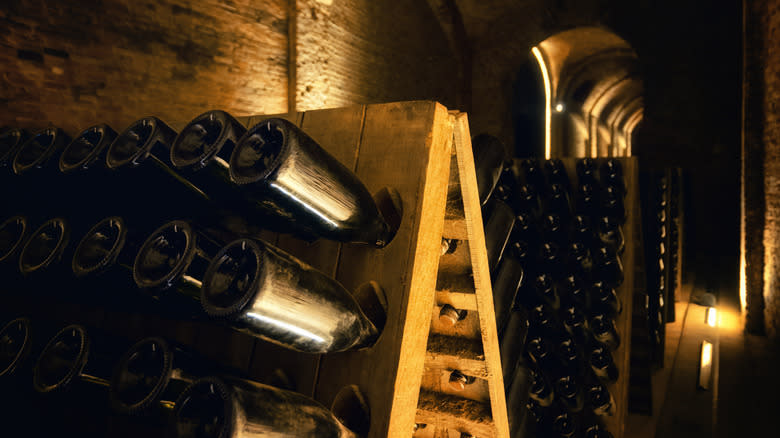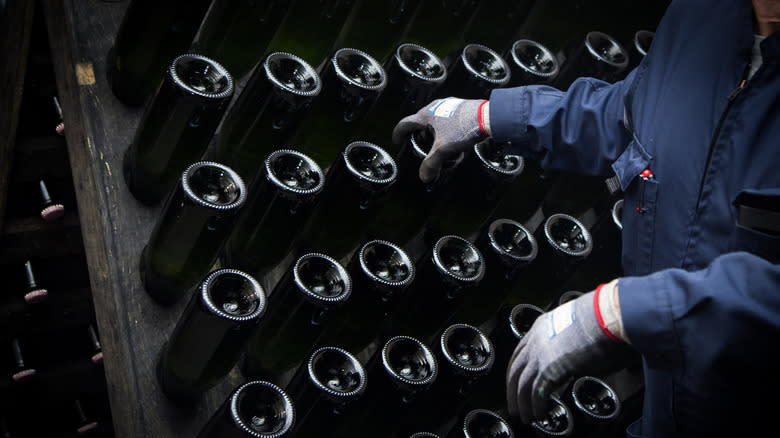What Riddling Actually Means In Wine Terminology

Enjoying a nice glass of wine after work doesn't require a degree in oenology, but the little details behind a glass of vino are what make the mysterious art of winemaking so interesting. Riddling is a perfect example of a seemingly simple process that hides a rich and fascinating history. Riddling is a method of removing sediment in sparkling wine by slowly spinning bottles as they hang upside down. While this is perfectly true, it doesn't convey just how revolutionary the idea was when it was first conceived in the early 1800s. The credit goes to Madame Clicquot, the widow who transformed her in-laws' struggling wine business into the legendary Champagne house Veuve Clicquot Ponsardin.
While Madame Clicquot did many things right, her riddling innovation was arguably her greatest achievement as it greatly reduced production costs and increased production speed -- a necessary improvement thanks to her near-overnight transition from a small town winery to an international wine brand. Before Clicquot, winemakers would remove the sediment by laboriously pouring champagne from bottle to bottle. This wasted an enormous amount of product and damaged the effervescence you need in a glass of bubbly. Clicquot solved this by cutting holes in a wooden board, hanging the champagne bottles upside down in the holes, and slowly twisting the bottles to get the sediment to settle in the neck of the bottle, where it would then be removed through disgorgement. Drinking wine sediment isn't going to hurt you, but it looks better removed and has a cleaner mouthfeel.
Read more: The 40 Absolute Best Cocktails That Feature Only 2 Ingredients
The Prestigious Riddler

In the old days, you would have professional riddlers or remuers (riddling is the English translation of the original French word remuage) who would each turn tens of thousands of bottles every day. It's a surprisingly precise art that requires a significant amount of training to get right. A good riddler will finish their work on a bottle in about a month. While that may have been an improvement in the 19th century, it's too slow for modern production standards.
These days, the vast majority of winemakers use a mechanical gyropalette that locks a rack of sparkling wine in place and slowly twirls it around while adjusting the angle of the bottles to get the sediment down in the neck. Because they can work around the clock, the mechanical version can finish a bottle in as little as one week. For large-scale production, mechanical riddling is a no-brainer, which has led to a decrease in demand for trained riddlers. Some winemakers will still riddle small batches by hand, but pretty soon the craft will likely be lost to time.
It's not as if many consumers are pining for the days when someone used to spin their champagne by hand -- the end result is ultimately the same. Riddling has the added benefit of allowing you to leave your wine in the cellar untouched without risking the buildup of sediment, though that hasn't stopped some of us from continuing to rotate our wines in long-term storage.
Read the original article on Tasting Table

